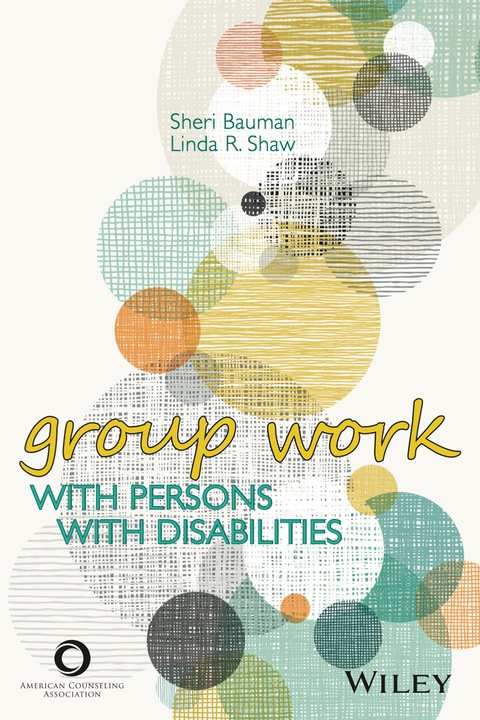Description
Efnisyfirlit
- Table of Contents
- Acknowledgments
- About the Authors
- Part I: General Principles
- Chapter 1: Introduction
- Definitions and Frameworks
- Client Rights
- Importance of Groups for Persons with Disabilities
- Organization of this Book
- Part I
- Part II
- Part III
- Key Terms
- Recommendations for Practice
- Chapter 2: Common Themes
- Models of Disability
- Cultural Views
- A Model of Adaptation
- Frequent Topics in Groups that Include Persons with Disabilities
- Social Relationships and Dating
- Sexuality
- Overprotection
- Abuse
- Maintaining Health
- Substance Abuse
- Accessibility Issues
- Key Terms
- Recommendations for Practice
- Chapter 3: Types of Groups
- Self-Help Groups
- Online Self-Help Groups
- Support Groups
- Counseling Groups
- Psychoeducational Groups
- Family Groups
- Group Therapy
- Theoretical Approaches
- Psychodynamic Approach
- Humanistic Approaches
- Cognitive Behavior Approaches
- Key Terms
- Recommendations for Practice
- Chapter 4: Diversity Issues
- Disability and Multiple Minority Status
- Intersectionality
- Cultural Differences Regarding Disability
- Multiple Identities and Mental Health
- Multiple Identities and Group Work
- Summary
- Key Terms
- Recommendations for Practice
- Chapter 5: Group Composition
- The Facilitator
- Structural Aspects
- Size
- Setting
- Length and Duration
- Homogeneous or Heterogeneous Groups
- Summary
- Key Terms
- Recommendations for Practice
- Chapter 6: Ethical Considerations
- Group Composition: Choosing Inclusion Versus Exclusion
- Informed Consent
- Confidentiality and Socializing
- Online Groups
- Summary
- Key Terms
- Recommendations for Practice
- Chapter 7: Training Considerations
- Raising Awareness
- Awareness Group
- Simulations
- Legislation
- Americans With Disabilities Act
- Section 504 of the Rehabilitation Act
- General Etiquette
- Responsibilities of Facilitators
- Key Terms
- Recommendations for Practice
- Part II: Specific Disabilities
- Chapter 8: Sensory Disabilities
- Loss of Vision and Blindness
- Groups for Children and Adolescents
- Deaf and Hard of Hearing
- Groups for Children and Adolescents
- Parent Groups
- Summary
- Key Terms
- Recommendations for Practice
- Chapter 9: Psychiatric Disabilities
- Serious Mental Illness
- Definitions
- Group Work with SMI Clients
- One Clinician’s Perspective
- Therapist Characteristics
- Specific Strategies
- Theoretical Perspectives
- Posttraumatic Stress Disorder
- Types of PTSD Groups
- Substance Use Disorders
- Summary
- Key Terms
- Recommendations for Practice
- Chapter 10: Cognitive Disabilities
- Intellectual Disabilities
- Autism Spectrum Disorder (ASD)
- Traumatic Brain Injury
- Dementia
- Rationale for Group Work and Types of Groups
- Addressing the Needs of Group Members with Cognitive Disabilities
- Planning the Group
- Group Composition
- Simple Is Better
- Involve Caregivers
- Group Structure
- Facilitator Responsibilities
- Summary
- Key Terms
- Recommendations for Practice
- Chapter 11: Physical Disabilities
- Orthopedic Disabilities
- Neuromotor Disorders
- Amputation
- Spinal Cord Injuries
- Congenital Versus Acquired Disabilities
- Group Considerations
- Group Composition and Screening
- Topics or Themes
- Summary
- Key Terms
- Recommendations for Practice
- Chapter 12: Chronic Health Conditions
- Diabetes
- Epilepsy
- HIV Infection
- Considerations for Group
- Planning the Group
- Facilitator Responsibilities
- Topics
- Summary
- Key Terms
- Recommendations for Practice
- Part III: Resources
- Chapter 13: Recap and Conclusions
- Recommendations for Practice
- Chapter 14: Exercises and Resources
- Who am I?
- Sentence Stems
- First Impressions
- Autobiography
- Empty Chair
- Group Tasks
- Adjectives
- Feedback
- Self-Disclosure
- Sources of Activities
- Resources
- Group Work
- General Disability Information
- Specific Disabilities
- Books
- Online Materials
- References
- Index
- Technical Support
- End User License Agreement






Reviews
There are no reviews yet.